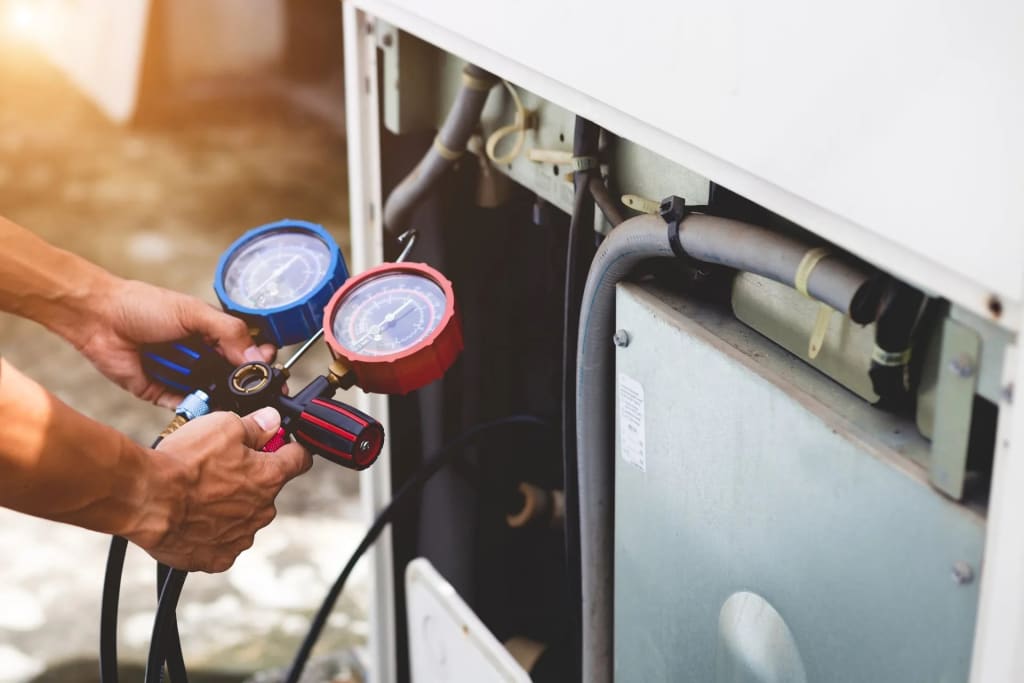Content warning
This story may contain sensitive material or discuss topics that some readers may find distressing. Reader discretion is advised. The views and opinions expressed in this story are those of the author and do not necessarily reflect the official policy or position of Vocal.
U.S. Gas Leak Detectors Market: Ensuring Safety Top Measures for Securing Your Home and Workplace
U.S. Gas Leak Detectors Market

Evolution of U.S. Gas Leak Detectors Market
Gas detectors were first introduced in the late 19th century to detect coal gas, which was widely used for lighting and heating at the time. Early detectors consisted of materials that would change color in the presence of gas leaks. In the 1930s, electrochemical sensors were developed that could more accurately detect specific gases like carbon monoxide. However, these early detectors were bulky and not suitable for residential use.
Post-World War II saw major advancements in miniaturization and electronics that enabled the first truly portable domestic Gas Leak Detectors. Transistor technology played a key role, allowing detectors to be packaged in compact housings. Carbon monoxide became a major target gas for detection due to its prevalence in home heating systems and prevalence in accidental poisonings. Additional safety standards in the 1970s drove further innovation and adoption of CO detectors for residential and light commercial use.
Modern Gas Detector Technologies
Today's gas detectors utilize a variety of sensing technologies to accurately detect different target gases. Here are some of the main technologies currently used:
- Semiconductor Sensors: Commonly used to detect combustible (e.g. methane) and toxic (e.g. CO) gases. They operate by measuring changes in electrical conductivity when gas molecules are adsorbed onto the sensor surface.
- Electrochemical Sensors: Very good for detecting toxic gases like CO and hydrogen sulfide. They involve oxidizing gas molecules at an electrode to produce an electrical current proportional to concentration.
- Infrared Sensors: Utilize the fact that most gases absorb infrared light at specific wavelength ranges. IR detectors can identify gas types very precisely but tend to be larger and more expensive than other options.
- Catalytic Combustion Sensors: Detect combustible gases like methane, propane, butane by catalyzing their combustion into carbon dioxide and observing the temperature change with a thermocouple.
- Photoionization Detectors: Use ultraviolet light to ionize gas molecules. Good for detecting a wide range of volatile organic compounds but cannot distinguish between different types.
Residential U.S. Gas Leak Detectors Market
For household use, the most common type of gas leak detector is an electrochemical or semiconductor CO sensor packaged in a self-contained, battery-powered unit no larger than a smoke alarm. These plug directly into an AC outlet with a backup battery. If CO concentrations rise above a certain threshold, an audible alarm sounds to alert occupants.
Residential detectors can be positioned strategically near potential CO sources like furnaces, water heaters, fireplaces and in bedrooms and living areas depending on home layout. Manufacturers recommend replacement every 5-7 years as sensor accuracy degrades over time. Combination smoke/CO detectors also allo protection from both fire and asphyxiation risks with a single device.
Commercial and Industrial Leak Detection
Larger facilities like schools, hospitals, warehouses and industrial plants require more robust gas detection systems. Fixed monitor panels positioned throughout a building continuously sample air and monitor multiple locations simultaneously for a variety of gases. Systems can be configured with wired or wireless detectors linked to a central control panel.
Alarms are sounded if any gas exceeds preset limits along with visual display of thedetector location. Integrated ventilation systems may be activated to purge areas of harmful gases. Detectors in these settings often use larger sensors with longer lifespan like infrared, thermal conductivity or catalytic combustion types permanently installed rather than portable designs. Higher accuracy is required to ensure worker and environmental safety in industrial operations.
Future Directions and Conclusion
Despite many innovations, gas detectors still have room for improvement. Miniaturization allows integration into more portable wearable formats and internet connectivity enables real-time remote monitoring. Additional sensor types promise selective detection of an even wider range of target gases. Lower production costs could expand use of combination smoke/gas detectors globally. Meanwhile focus remains on extending sensor longevity through nanotechnology and passive cooling designs requiring less maintenance.
In Summary, as new fuel sources like hydrogen and renewable gases are adopted, detectors will need to evolve detection capabilities accordingly. Overall gas leak detection technology has come a long way from its origins in the 1800s. Continued innovation ensures this critical safety application remains ahead of emerging threats to save lives from accidental gas exposures at home and at work.
Get more insights on this topic: https://manage.wix.com/dashboard/c4ce5910-f290-4bad-9e93-c07ea06fa726/blog/642d39af-16f0-4ef5-b3ee-579f67a4685f/edit?tab=published&lang=en
About the Creator
Enjoyed the story? Support the Creator.
Subscribe for free to receive all their stories in your feed. You could also pledge your support or give them a one-off tip, letting them know you appreciate their work.





Comments
There are no comments for this story
Be the first to respond and start the conversation.